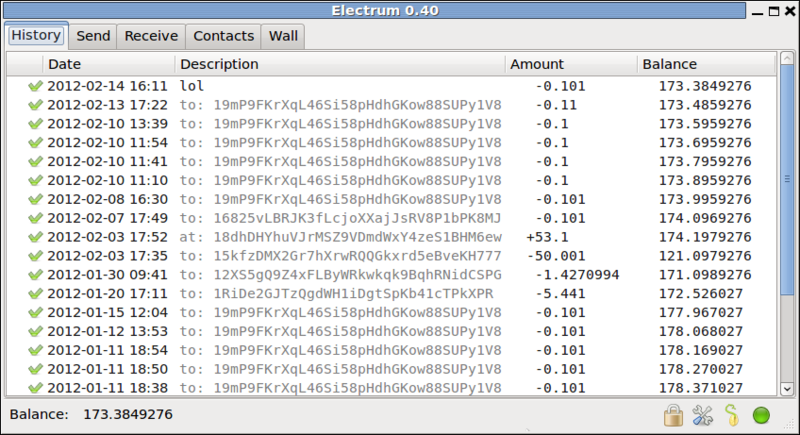Bitcoin is a digital currency that circulates without the need to go through any central authority. In other words, it is not under the supervision of a central bank. It is a type of cryptocurrency. A cryptocurrency is a medium of exchange using cryptography to secure transactions. Cryptography is a special method of storing and transmitting data.
A bitcoin is a unit of digital currency, i.e., a currency that exists electronically. In other words, it is internet money. Unlike dollars, pounds, or euros, it is not a centralized currency. However, it still works like real money.
In fact, bitcoin is the world’s first completely decentralized digital-payment system that operates as online cash.
Satoshi Nakamoto first proposed the idea of a cryptocurrency in a 2008 paper.

Bitcoin gaining respectability
In October 2014, the digital currency gained a famous backer. The world’s wealthiest individual, Bill Gates, said he found the cryptocurrency ‘exciting,’ and loved it because it was so cheap.
Mr. Gates said the following in an interview with Bloomberg:
“Bitcoin is exciting because it shows how cheap it can be. Bitcoin is better than currency in that you don’t have to be physically in the same place. And of course for large transactions currency can get pretty inconvenient.”
However, Mr. Gates also cautioned that users should be careful because of the online currency’s anonymity feature. Additionally, he mentioned that money launderers and terrorists use the cryptocurrency.
Recent years have seen a dramatic shift: in 2025, the U.S. government, under a pro-crypto administration, signed an executive order to establish a strategic Bitcoin reserve, signaling strong institutional and regulatory support. Similarly, other countries have updated their frameworks, with the EU implementing MiCA.
Bitcoin – transactions irreversible
The transactions of this digital currency are impractical to reverse. Therefore, it protects sellers and buyers from fraud. To prevent double-spending, upon validation the transaction enters a ledger known as the blockchain.
A global network of computers makes calculations each time there is a transaction. We call the owners of these calculating computers miners. The miners subsequently get new Bitcoin units as a reward.
To mimic scarcity, new bitcoins emerge at a decreasing rate. Researchers at The Weizmann Institute of Science said the rate of new Bitcoin creation would drop every four years. In fact, they will continue declining until there are 21 million bitcoins in circulation.
The history of Bitcoin
2008 – Satoshi Nakamoto posted a paper online. The paper outlined the idea of using a decentralized digital currency.
2009 – The launching of Bitcoin occurred, during which the first client went live.
2009 – Satoshi Nakamoto mined the first block of bitcoins, and called them the genesis block, according to an article in Wired Magazine.
2010 – Laszlo Hanyecz carried out the first real-world transaction of the currency. He paid 10,000 bitcoins to get a delivery of from Papa John’s.
2011 – Wikileaks and some other organizations began asking for anonymous Bitcoin donations, according to Forbes.
2011 – The Bitcoin exchange rate dropped dramatically. It was worth $30 in June and subsequently fell to less than $2 in October.
2012 – BitPay said that bitcoins are a compelling alternative to using credit cards. BitPay then signed up more than 1,000 merchants.
2013 – Germany officially recognized the cryptocurrency as a financial instrument. A financial instrument is a monetary contract between different parties which people can buy and sell.
2017 – There was explosive growth. Prices soared from under $200 to nearly $20,000.
2021 – Tesla announced that it bought about $1.5 billion of Bitcoin, giving the rise of major institutional investors, and then the introduction of Bitcoin futures and ETFs.
2024 – Bitcoin surpasses $100,000 for the first time amid a favorable regulatory climate, including the approval of several spot Bitcoin ETFs by the SEC.
Today, Bitcoin continues to be the cryptocurrency with the largest circulation and market cap.
How Bitcoin transactions work
People use Bitcoin addresses to send and receive the online currency. The system randomly generates the addresses. Each address consists of about 33 characters, namely letters and numbers.

There are three different components of a Bitcoin address:
- First, the Balance, which you can find in the blockchain. The blockchain is the register of your transactions.
- Second, the Public Address, which you can share with anyone. The public address is necessary to send bitcoins to a recipient.
- Third, the Private Key, which the address owner keeps secret. In other words, it is the address owner’s key to digitally signing in and validating the transfers.

Users can manage many addresses using a type of digital wallet we call a cryptocurrency wallet. These allow people to exchange bitcoins and check their balance whenever they want.
The digital wallet also provides users with security by hiding the private key. These wallets are available either as stand-alone programs or web applications.
Owners of these cryptocurrency units can digitally sign them over to other people through a transaction. Then, the payee can confirm each previous transaction.
In fact, bitcoins work very much like cash does in the real world. There is no need to provide your name. The exchange does not even have to go through a centralized system. Subsequently, people can buy things online anonymously.
The future of Bitcoin
There are four groups of participants. The cryptocurrency depends on their consistent participation for both its survival and growth.
The four groups are:
- Consumers, who pay for things using the cryptocurrency.
- Merchants, who accept Bitcoins in exchange for selling a product or service.
- Miners are people who run computers to validate the transactions.
- Entrepreneurs are those who build new products on top of Bitcoin.
